An IBM PS/2 Model 30 entered the collection, exactly the 8530-021 model, which I bought on eBay. The computer did not work well, so it was sold at me at a good price.

The IBM PS/2 Model 30 is an entry-level band desktop, produced by the International Business Machines Corporation (precisely IBM) since 1987.
There are several versions of IBM PS/2 Model 30. Mine, 8530-021, is equipped with an Intel 8086 processor at 8MHz.
Il sistema operativo di serie è IBM PC DOS versione 3.30. Relativamente ai supporti di archiviazione dei dati, l'IBM PS/2 model 30 è dotato di uno (o due) lettori di floppy disk interni, da 3.5", 720KB. Al posto del secondo floppy è possibile installare l'hard disk.
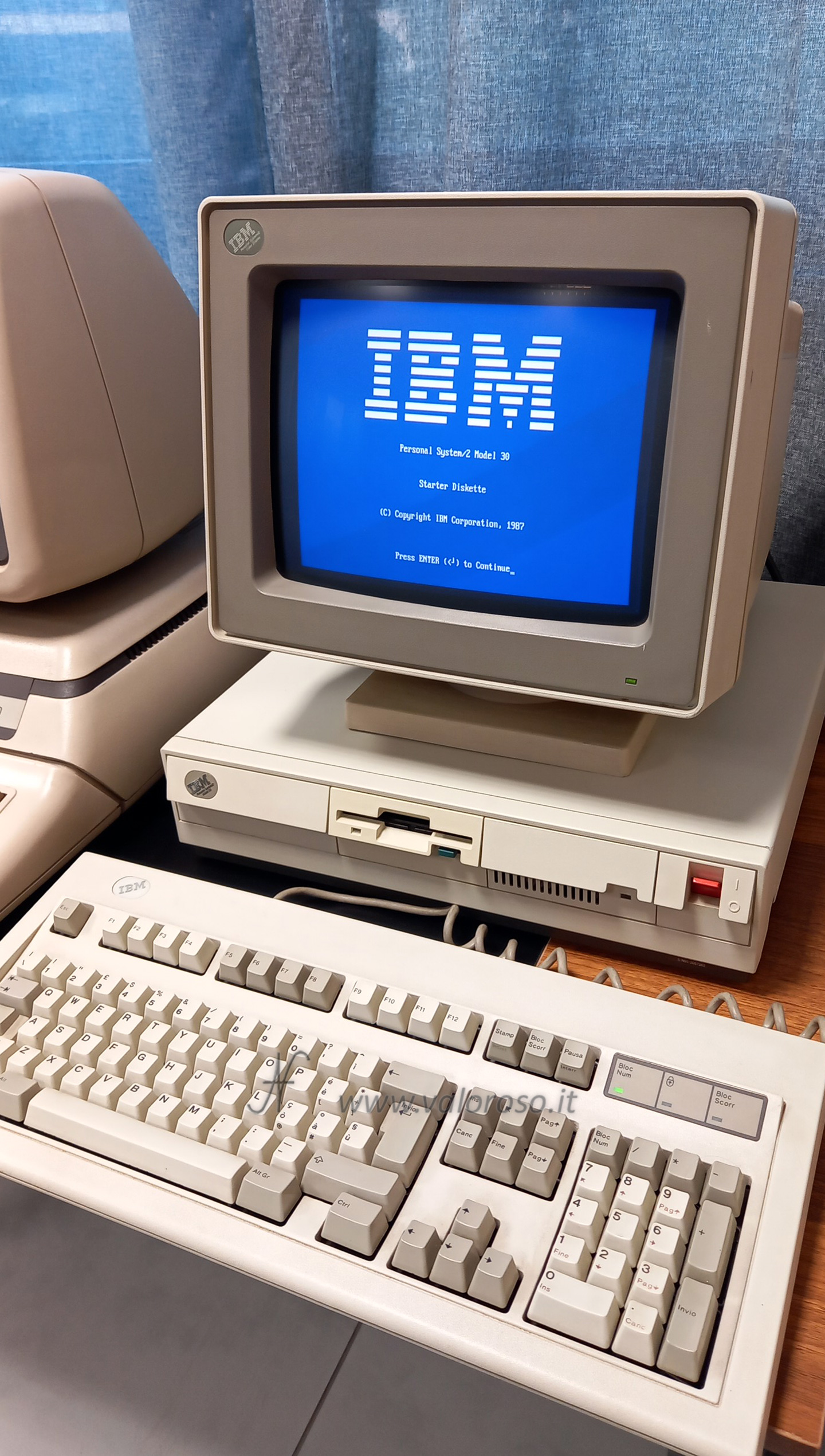
Upon arrival, the computer presented itself in good aesthetic condition. He had no hard disk, keyboard, mouse and monitor. In addition, the RAM was damaged: the diagnostic test to ignition had only 128kb of RAM instead of the correct 640kb.

I performed a little simple computer jobs. First of all I cleaned it well. Despite the cleaning ... it has remained a little stench of mold, which cannot be removed. I bought and replaced the 30 -pin Simm, 256kb. In this way, the RAM works correctly and, also counting the 128kb already welded on the motherboard, now the count is correct: 640kb. I purchased an IBM WDI-325q 20MB hard disk, so as to complete the computer. The hard disk connector is the owner and it is not possible to install other hard disks with ideal or similar connectors.
I also replaced the batteries, which were starting to leak acid, with a 3V lithium flat.
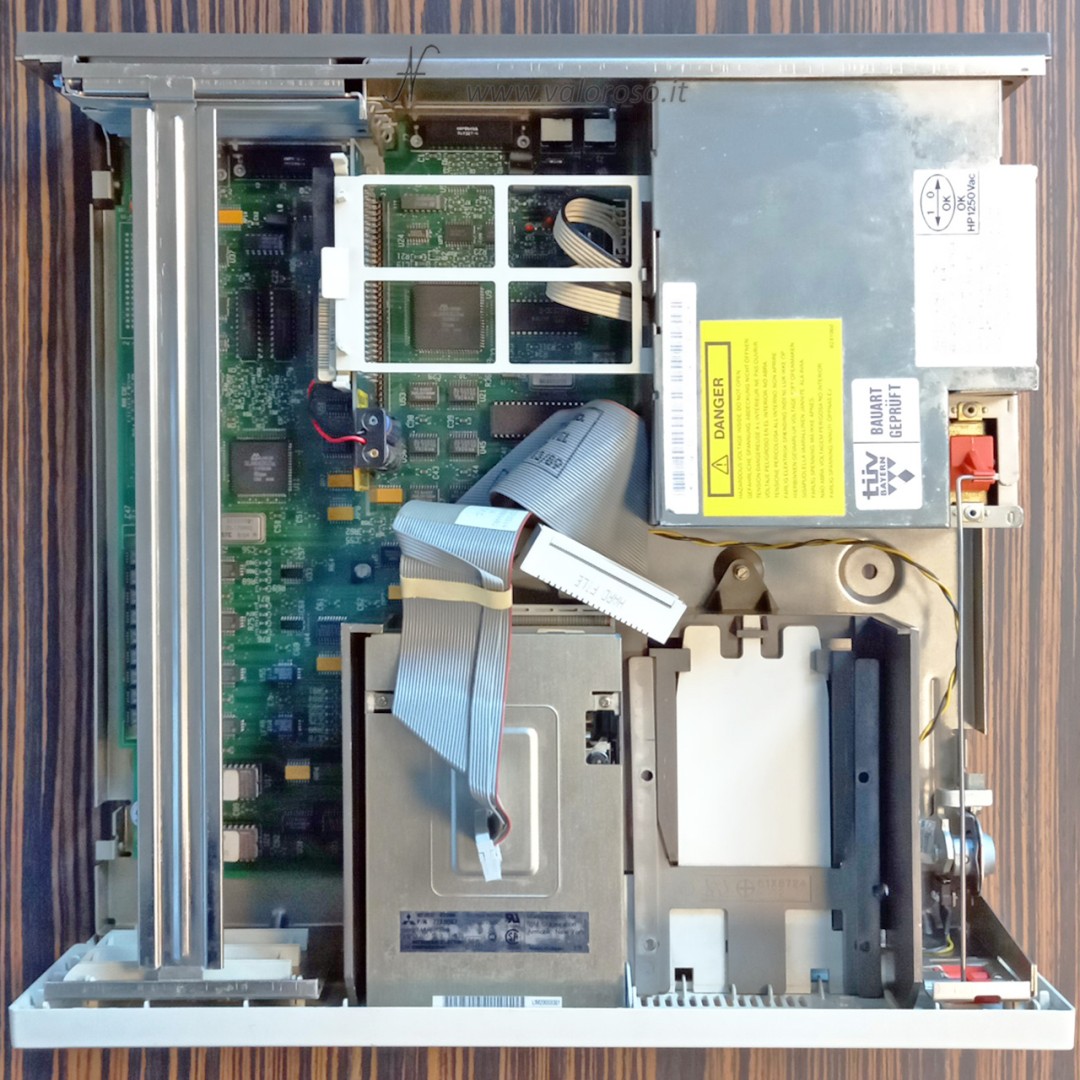
Startup screen
The computer starts with diagnostic tests. Many tests are not visible to monitor, which only shows the trend of the RAM memory test.
After the initial self-test, the computer searches for a startup disk (floppy floppy disk or hard disk). If there is no boot disk, it prompts you to insert it and press the F1 key.

If the disk is not inserted, the computer starts with the IBM Personal Computer Basic, version C1.10, present in Roma.
After the installation of the new Hard Disk and the correct operating system, the computer now starts with the IBM PC dos operating system version 3.30.
There is a system disk that contains diagnostic software, as well as the programs to set the date and time of system.
IBM PS/2 model 30, 8530-021 specifications
CPU: Intel 8086, 16-bit, 8 MHz
Coprocessor: optional, Intel 8087, 8MHz
RAM: 640 KB (128 KB soldered to motherboard + 2 x 256 KB 30-pin SIMM with parity)
ROM: 64 KB (contains POST = Power On Self Test, BIOS = Basic Input-Output System, BASIC and graphical character map)
Graphics: Integrated MCGA graphics, 64KB RAM, DB15 output for VGA monitor
Text mode: 80 columns x 25 rows or 40 columns x 25 rows (16 colors)
Graphics mode: 640 x 200 pixels (2 colors) or 320 x 200 pixels (256 colors)
Audio: beep
Keyboard: external PS/2, such as the IBM Model M space saver or enhanced mechanical keyboard

Software supplied: IBM PC DOS version 3.30
Supporti di archiviazione: n. 1 floppy disk drive interno, 3.5", 720 KB (il computer supporta fino n. 2 floppy disk drive interni e anche un hard disk da 20MB)
With regard to the hard disk, what I installed is 20MB, as required by the computer specifications. I also tried to install a 30 MB one, obviously with the same connector, and it works.

Expansion ports, internal:
- N. 3 8-bit ISA expansion slots on riser card
- Connector for floppy disk drive 34 poles (non -standard, because it also brings power)
- 44 Poli hard disk connector (the format is the owner and also brings the power supply)
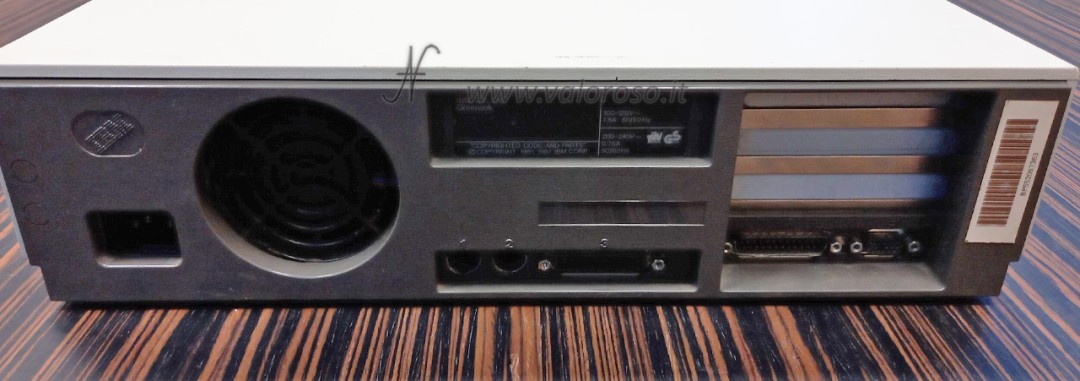
Expansion ports, external:
- PS/2 keyboard
- Mouse PS/2
- Centronics
- Serial (DB25)
- Monitor (DB15)
Dimensions and weight: 41 x 40 x 10 cm, 8 Kg
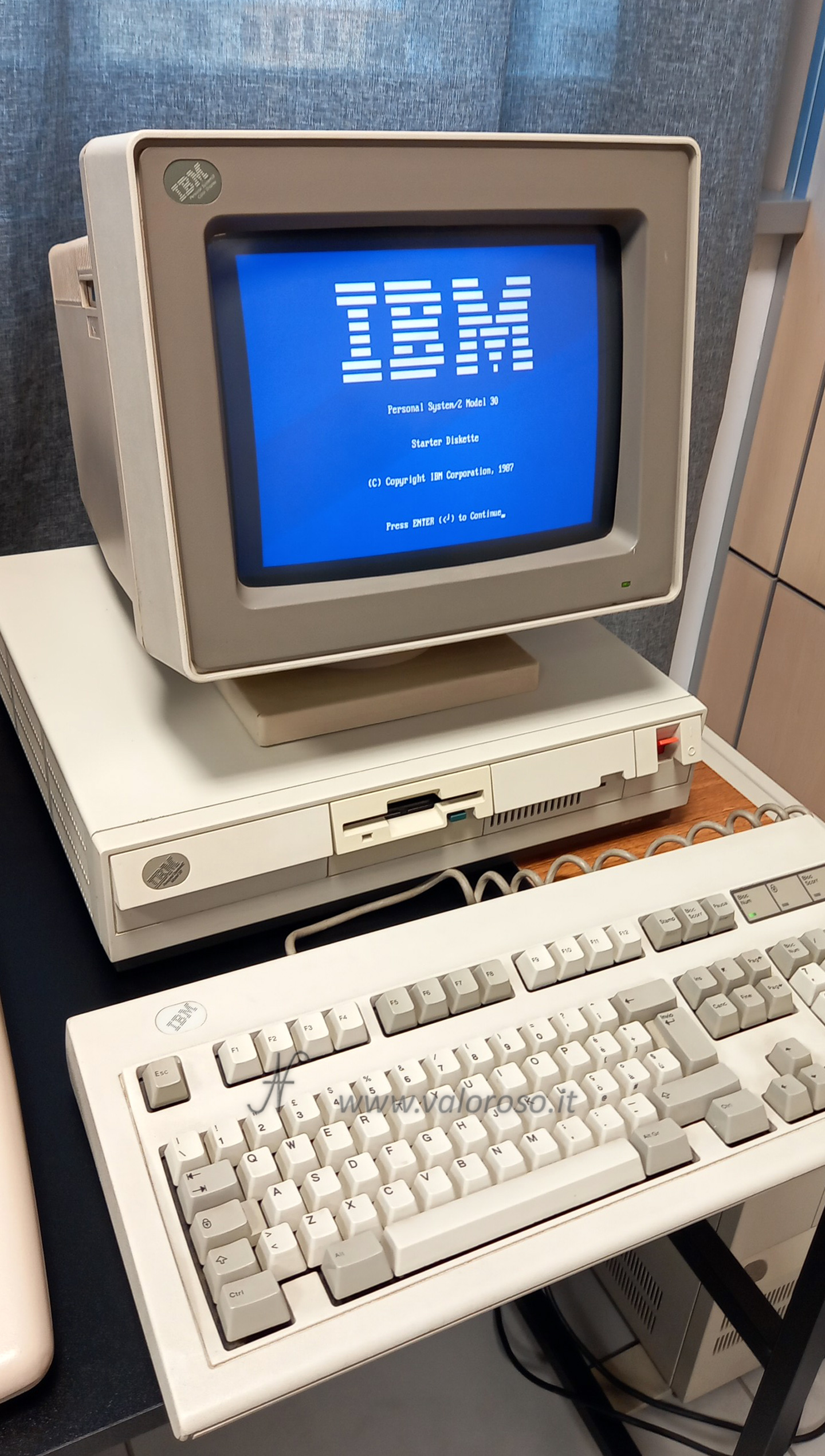
Emulation
The IBM PS/2 Model 30 computer starts with IBM PC DOS operating system. It is possible to emulate the MS-DOS environment with Dosbox (although Dosbox is an emulator for X86 systems).
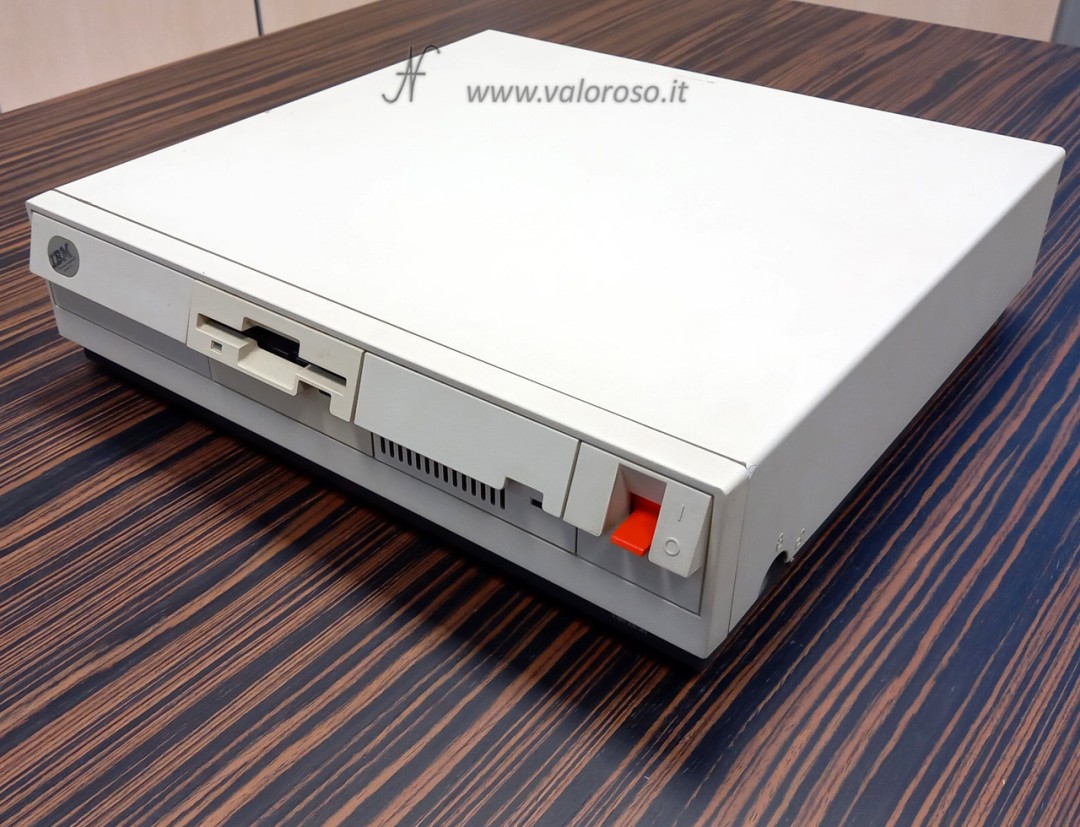
Power supply
The power supply of the IBM PS/2 model 30 personal computer is internal. On the back of the computer, there is the IEC C14 power connector, where you can connect the mains power cable. My example is powered by 230 V alternating current 50 Hz and absorbs 70 W.

The voltages generated, in direct current, are:
- 5V, 9A
- 12V, 1.8A
- -5V, 0.1A
- -12V, 0.3A
The front ignition switch mechanically connects to the switch on the power supply, by means of a metal wand.
Papers
1. IBM PS/2 Model 30 brochure
2. IBM PS2 Model 30 schematics
3. IBM PS/2 Model 30 technical reference